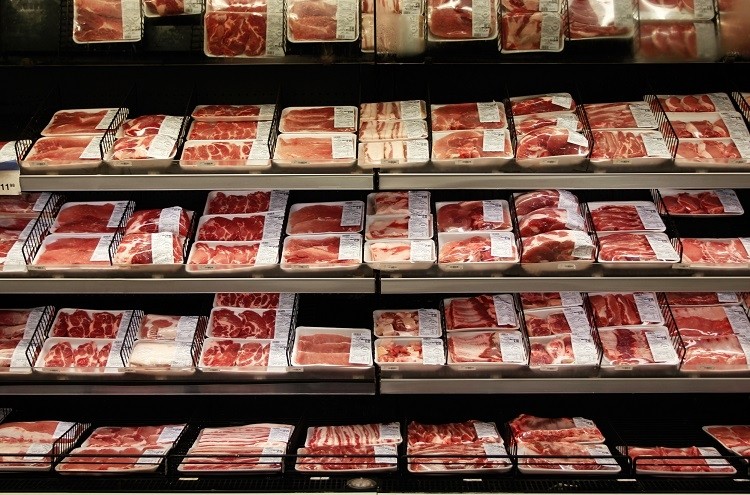Discover the Neighborhood Taste at Bagley Farms Meat Market Edwardsville IL: Fresh and Delicious
Discover the Neighborhood Taste at Bagley Farms Meat Market Edwardsville IL: Fresh and Delicious
Blog Article
Discover the Art of the Butcher's Cut in a Modern Meat Market
In the ever-evolving landscape of modern meat markets, the butcher's cut has transcended its standard roots, merging age-old workmanship with contemporary practices. Today's butchers are not simply cpus of meat; they are educated craftsmens who stress sustainability and honest sourcing. Their knowledge in selecting and preparing cuts customized to specific cooking demands uses an unmatched dining experience. What genuinely establishes the modern-day butcher apart is their capability to forge a deeper connection between consumers and the beginnings of their meat. Exactly how do these masters balance tradition with development, and what effects does this have for the future of meat consumption?
Advancement of Butchery Techniques
The evolution of butchery techniques shows an abundant tapestry of innovation and adjustment driven by improvements in modern technology, modifications in consumer need, and a much deeper understanding of meat science. Historically, butchery was a craft gave via generations, with methods developed over centuries to make the most of return and taste. The industrial revolution ushered in automation, changing conventional techniques and making it possible for large handling.
The mid-20th century saw butchery techniques even more improved by scientific insights right into muscle biology and meat aging, enhancing both tenderness and preference. Innovations like vacuum packaging and refrigeration extended item shelf-life, allowing butchers to diversify offerings and boost quality control. This period also noted the increase of specific devices, such as band saws and meat slicers, which increased precision and effectiveness in meat processing.

The 21st century has introduced electronic modern technology into the butchery world. Electronic systems now help in monitoring pet provenance and optimizing cuts to fulfill particular customer choices. Furthermore, a rebirth in artisanal butchery has emerged, mixing traditional abilities with contemporary knowledge to accommodate customers seeking ethical and lasting meat choices. This development underscores a vibrant interaction in between practice and advancement, conference modern needs while preserving the craft's heritage.
Understanding Meat Cuts
Understanding the ins and outs of meat cuts is crucial for both butchers and customers seeking high quality and worth. For butchers, exact cuts reflect ability and respect for the craft, guaranteeing minimal waste and ideal yield.

Understanding muscular tissue make-up is essential; muscular tissues used extra frequently by the animal have a tendency to be tougher and are best suited for sluggish food preparation methods, while less-used muscle mass, like those found in the loin, are a lot more tender and suitable for barbecuing or roasting. Experience with these differences equips consumers to make enlightened choices, boosting their cooking undertakings.
Choosing Top Quality Meat
Choosing the best meat entails even more than simply picking a visually attractive item from the display. The art of selecting quality meat needs a critical eye and knowledge of particular features that represent quality and quality.
Second of all, think about the marbling, which refers to the white flecks of fat within the muscle. Correct marbling is a key indicator of inflammation and flavor, as it melts during cooking, improving the meat's juiciness. Keep in mind, greater marbling usually associates with exceptional quality cuts, such as USDA Prime.
Texture is another crucial element; meat must feel solid to the touch, not slimy or overly soft. Additionally, be mindful of the scent. Fresh meat needs to have a tidy, neutral scent, cost-free from any kind of sour or repulsive odors.
Matching Cuts With Cooking Methods

Conversely, tougher cuts like brisket and chuck roast are rich in collagen, which damages down right into jelly when cooked slowly. These cuts are suitable for braising or slow-moving roasting, allowing the meat to tenderize in time and create deep, intricate flavors. Similarly, cuts such as short ribs and pork shoulder get on well with slow-cooking approaches, where expanded cooking times change their durable textures into succulent meals.
Lamb navigate to this website shanks and oxtail, which require prolonged cooking to tenderize, are ideal candidates for stewing or slow simmering. These methods coax out abundant, passionate tastes while keeping dampness. By recognizing the unique characteristics of each cut, chefs and home chefs alike can boost their cooking productions, making certain each recipe is both pleasing and unforgettable.
The Butcher's Duty Today
Navigating the evolving landscape of the modern-day meat market, the butcher's function today extends past simple preparation of cuts. Contemporary butchers look at this site are cooking artisans, instructors, and advocates for lasting methods. They bridge the space between the farm and the fork by ensuring moral sourcing, understanding pet husbandry, and prioritizing openness in the supply chain. This shift mirrors the growing customer demand for top quality over quantity, where provenance and pet welfare are vital.
Along with crafting exact cuts, butchers currently engage straight with customers, using cooking advice and tailoring choices to match private demands and choices. Their competence in meat aging, marbling, and taste profiles empowers customers to make enlightened decisions, improving their cooking experiences. This customized solution exhibits the butcher's developing duty as a relied on advisor in the kitchen area.
In addition, butchers are pivotal in reducing waste, using entire pets to create varied items such as sausages and stocks. This extensive technique not just values the pet but also aligns with contemporary sustainability objectives. This way, the modern butcher symbolizes both custom and advancement, adjusting to an ever-changing market while maintaining the virtuosity and honesty of their craft.
Conclusion
Mastery in understanding varied meat cuts and quality indications equips butchers to provide enlightened referrals, lining up specific cuts with optimum food preparation methods. By honoring historic additional reading techniques while accepting contemporary needs, the butcher's role continues to be crucial in today's sophisticated meat market.
Report this page